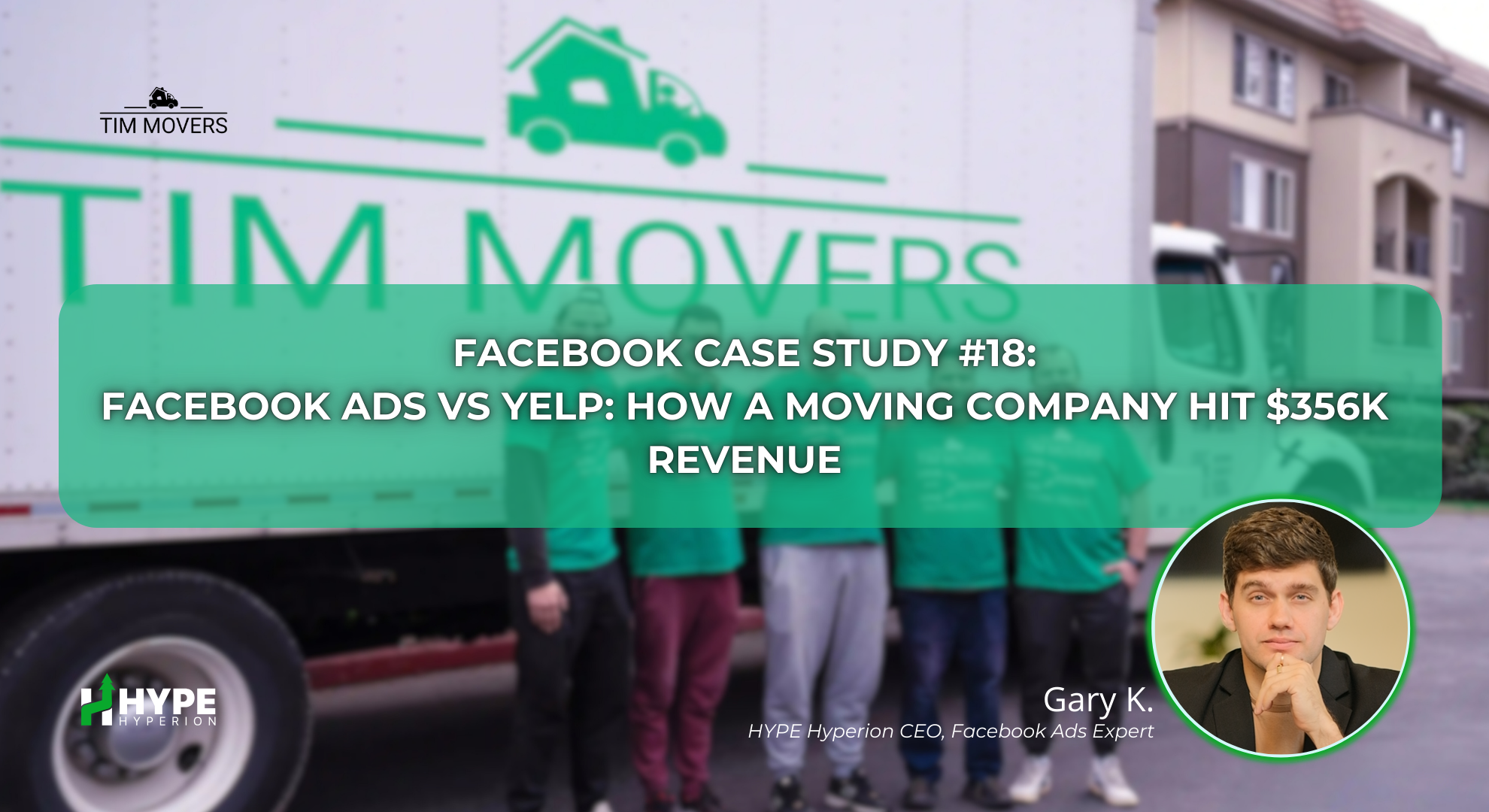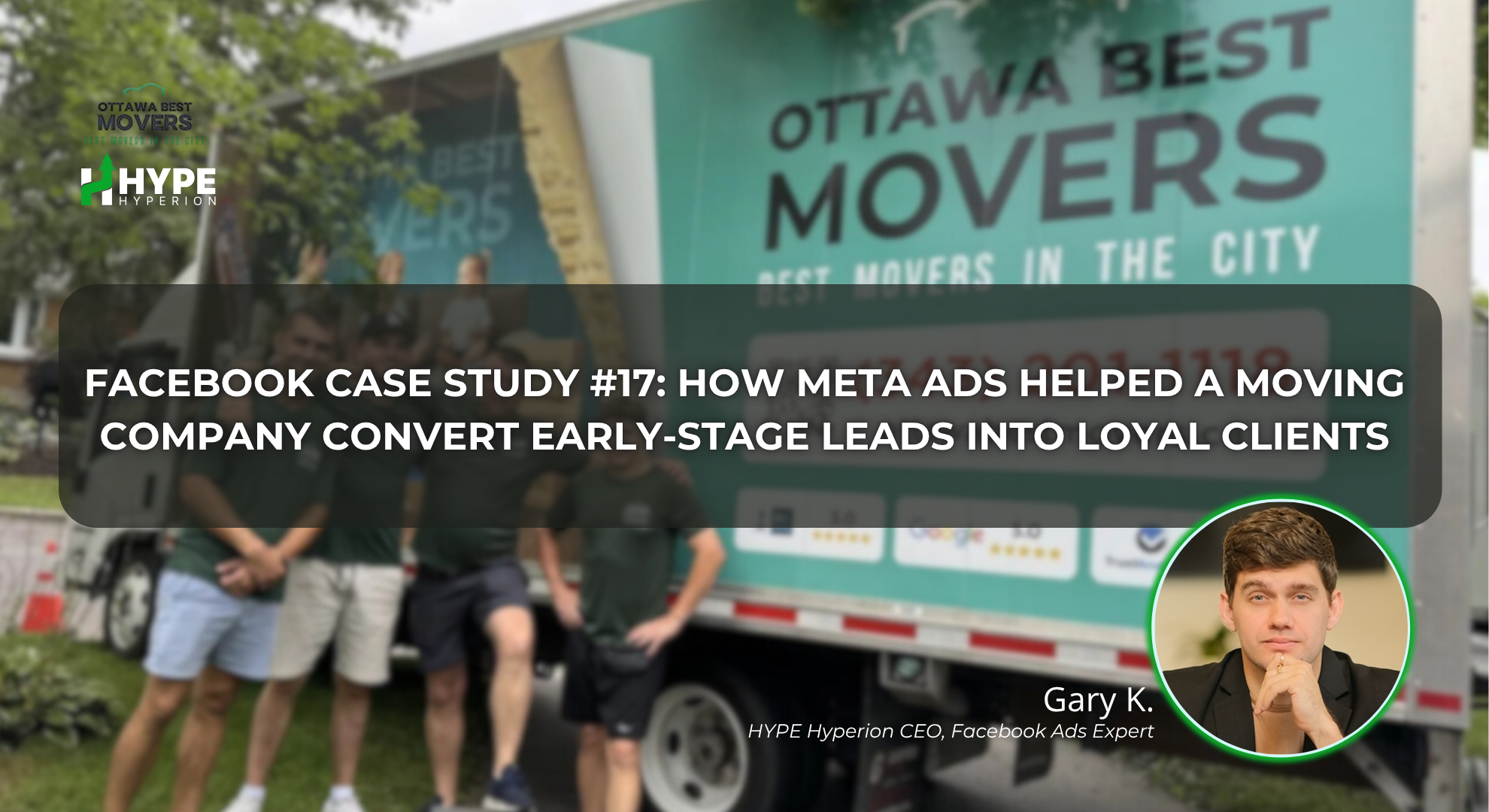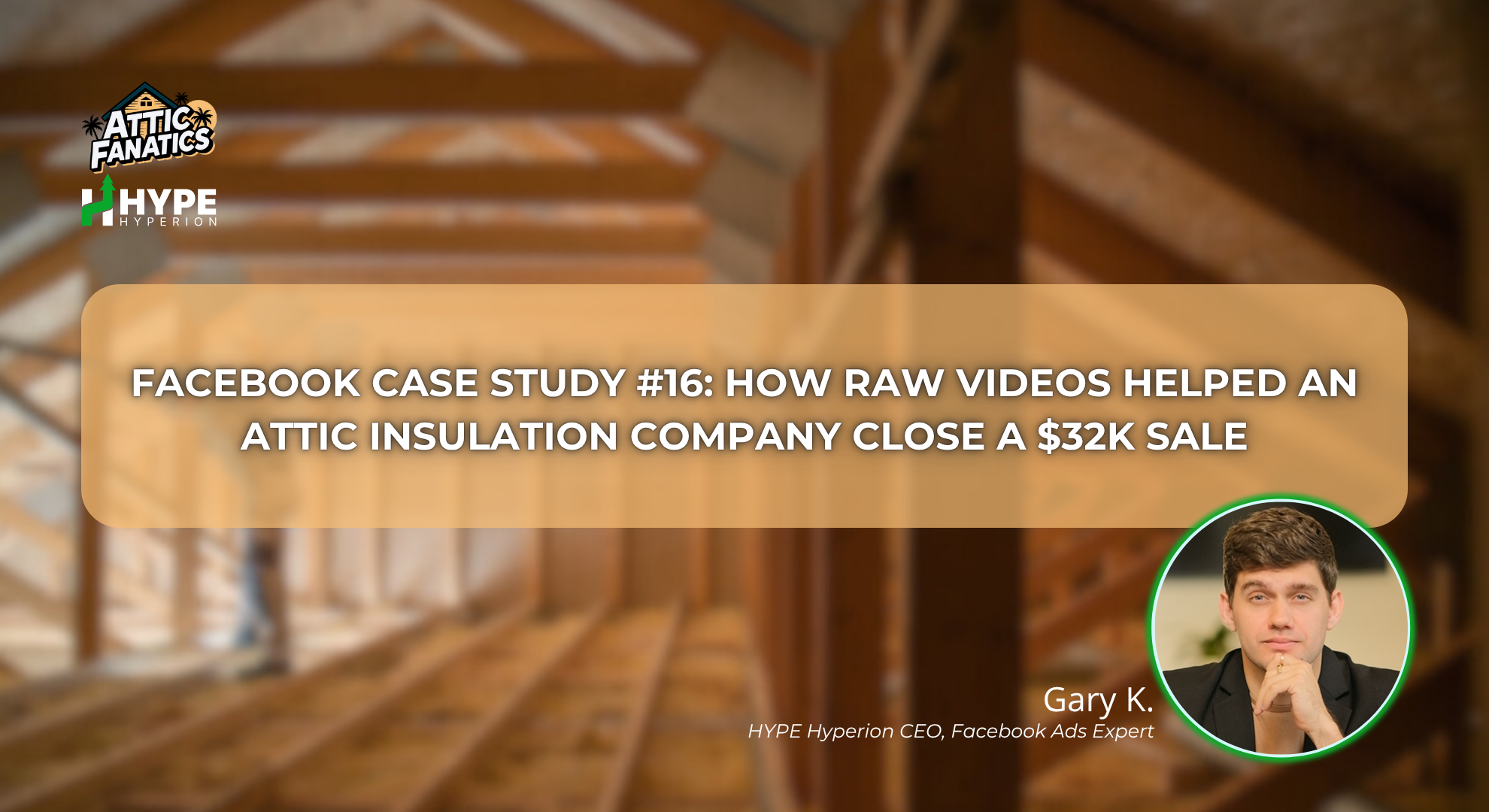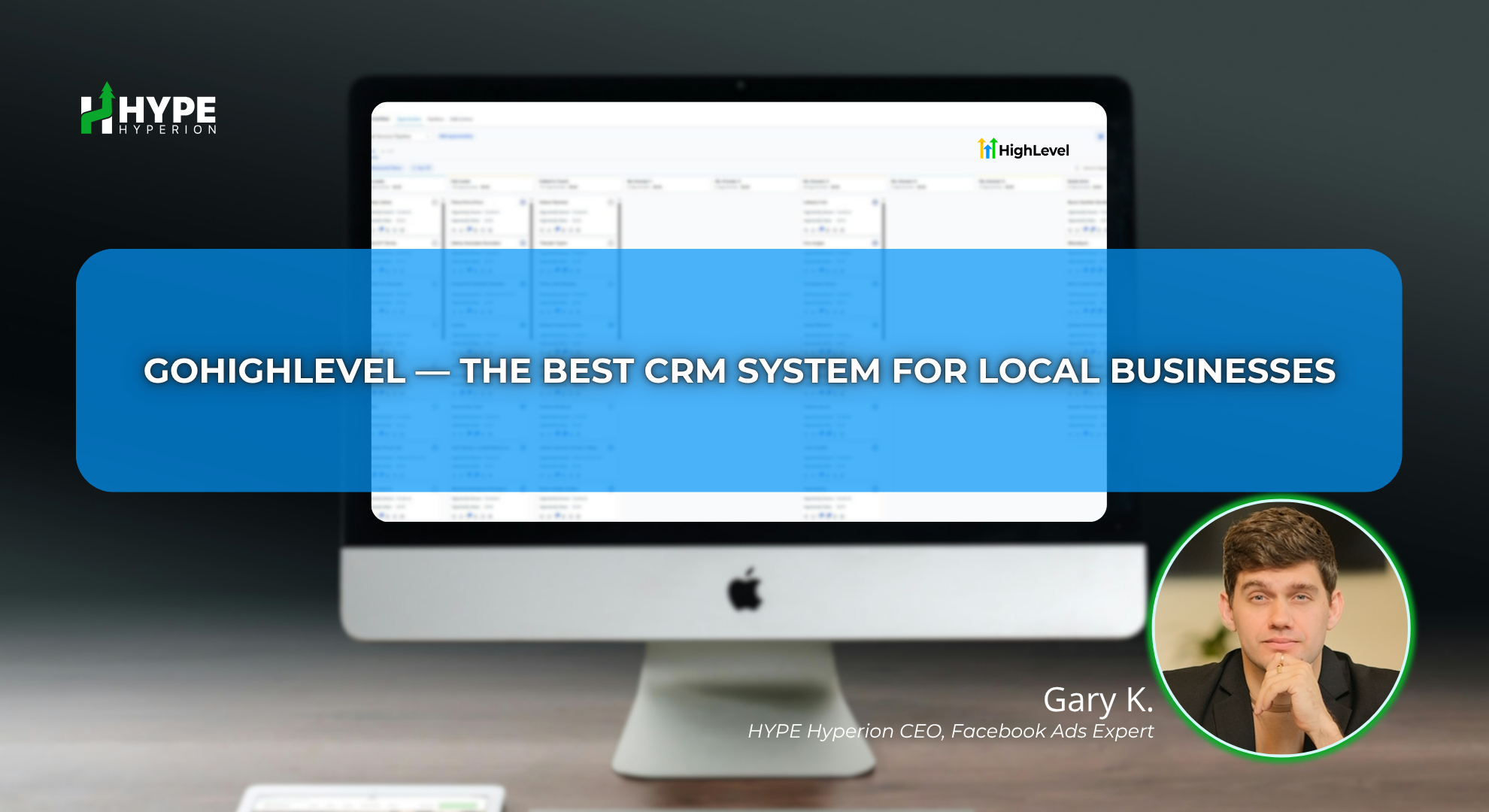
Gary K
Founder & CEO of HYPE Hyperion Digital Agency, Facebook Ads Lead Expert, Head of Marketing.
I’ve been in marketing since 2020, when I saw its impact on business growth. With years of experience in building and scaling advertising strategies, I founded HYPE Hyperion to help brands and businesses achieve real results through modern digital marketing solutions.
December 29, 2025
How Facebook Ads became the main lead source for a US moving company, replaced $60K/year Yelp spend, and delivered up to $76K in monthly revenue using fast follow-up.
Read moreOctober 28, 2025
Discover how HYPE Hyperion helped Canadian moving company turned early-stage Facebook leads into loyal clients through consistent follow-up and smart Meta Ads strategy.
Read moreJuly 21, 2025
A $32K attic insulation job from one raw video ad? See how HYPE Hyperion’s strategy boosted lead quality and conversions using simple, unscripted Facebook creatives.
Read moreJuly 8, 2025
Why GoHighLevel Is the Best CRM for Small and Medium-Sized Businesses (SMBs) In the fast-paced world of local business, juggling lead generation, follow-ups, appointment scheduling, client communication, and reporting can feel overwhelming. Most business owners use a patchwork of tools — a CRM here, a calendar tool there, some email automation, and maybe even a […]
Read moreJuly 7, 2025
How HYPE Hyperion helped an Ottawa moving company generate high-quality Facebook leads with low CPL — with pre-qualified forms, emotional ads, and a system built to scale.
Read moreMay 27, 2025
Cases & Projects Facebook Facebook Advertising
HYPE Hyperion used insurance-backed offers and Facebook ads to bring in quality leads for a U.S. vein treatment clinic.
Read more




